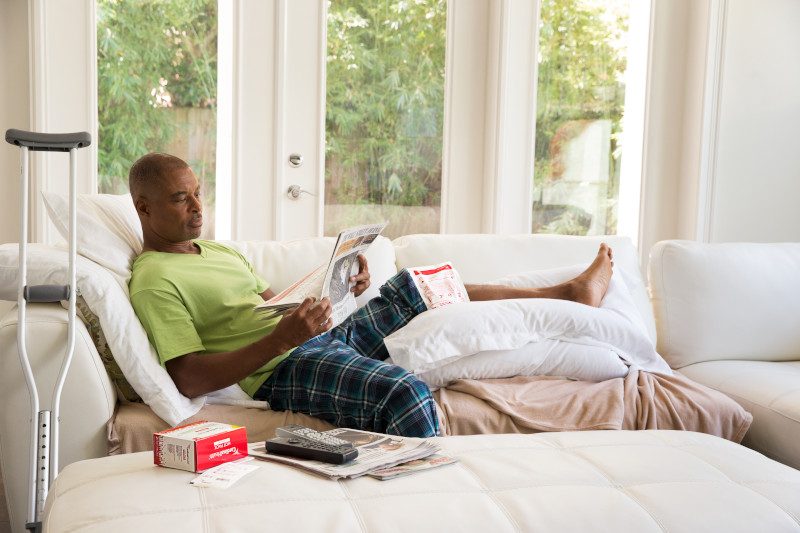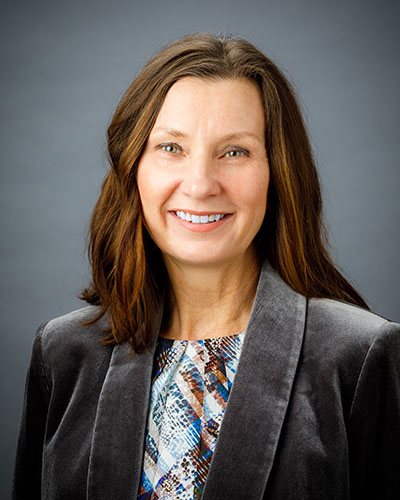Cardinal Health MarketSM
The legacy Cardinal.com Medical Ordering site has been replaced with Cardinal Health MarketSM, a new product experience designed with you in mind.

05/27/2021
By Suzanne Foster, President, Cardinal Health at-Home Solutions

The shift to virtual care is transforming healthcare. Thanks to ever-improving technologies and digital tools, virtual care was gaining traction before the COVID-19 pandemic, but accelerated dramatically last year, as providers and patients sought ways to minimize the virus’ spread.
As president of Cardinal Health at-Home Solutions, I lead the work of bringing healthcare into the home. We serve more than three million customers each year through two distinct businesses: Edgepark, which delivers products directly to consumers, and Cardinal Health at-Home, which serves home care and hospice agencies. Cardinal Health is uniquely positioned to support home healthcare, thanks to our strength as a provider of medical supplies. With more than 40,000 different suppliers, we offer a nationwide supply chain capability and a robust logistics and distribution network.
We know healthcare meets patients where they are. More and more, consumers are demanding easier access to care, and they want to receive that care at home.
The pandemic has driven us to find better ways to provide virtual care and there’s a direct correlation between better tech and care. By coordinating across products and services as patients recover from illnesses, age and receive healthcare in the comfort of their homes, Cardinal Health has the opportunity to provide a better patient experience.
How the pandemic pushed virtual healthcare forward
Prior to the pandemic, at-home healthcare was limited by three factors:
However, within 30 days of the World Health Organization’s declaration of the pandemic, all of these limitations had changed.
Pushing out healthcare: Capacity alone forced hospitals to care for non-COVID patients differently. In a February 2021 pulse survey conducted by the U.S. Department of Health and Human Services (HHS), hospital administrators reported using telehealth during the pandemic, to increase access to care and to reduce workload and spread of the virus among staff. They used virtual care to connect remote specialists to patients in intensive care, to conduct follow-up visits for patients recovering at home from COVID-19, to provide mental health services and to educate patients and caregivers about at-home care.
Reimbursement changes: In March 2020, the Centers for Medicare & Medicaid Services (CMS) announced its Hospitals Without Walls program, which gave broad regulatory flexibility for hospitals to provide services outside traditional hospital settings. Then, in November 2020, in order to alleviate the pressure on hospital systems operating at capacity with COVID patients, CMS expanded Hospitals Without Walls, so that eligible hospitals could be reimbursed for treating eligible patients in their homes.
Broader acceptance: Prior to the pandemic, patients were accustomed to brick-and-mortar hospitals, and, for the most part, didn’t trust that they could receive the same level of care anywhere else. But patients and providers who tried virtual care for the first time during the pandemic discovered that it is not only a safe option; it’s also a good option. Today, virtual visits account for about 10 percent of physician visits, compared to less than one percent prior to the pandemic.
Virtual care in a post-pandemic era
The expansion of virtual healthcare can help patients in many ways. Those with diabetes, heart disease, asthma and other chronic conditions can be monitored remotely, to help them control their conditions better and assist clinicians with treatment. Elderly patients with limited mobility can more easily access care.
Virtual care is also helpful for those with mental health issues. According to The Commonwealth Fund, virtual care is effective in treating a variety of mental health concerns, including depression and substance use disorders, comparable to in-person services. In addition, there’s a feeling of distance that comes from a virtual mental health visit, which can help patients talk more openly about what they’re dealing with. If the visit is via video, the provider gets the additional advantage of being able to see the patient’s home environment. Seeing into the patient’s home can also help specialty practitioners. Neurologists can assess patients’ ability to care for themselves; allergists may be able to determine what is causing allergies.
Addressing health disparities with virtual care
Telehealth has the potential to increase access and reduce health disparities by removing barriers, like limited transportation or childcare services, in underserved communities. Patients who can’t afford to take time off during the day can have virtual appointments in the evenings or on the weekend. Rural patients can get regular, virtual health screenings.
85 percent of all Americans own and use a smartphone, according to a Pew Research Center Report. Underserved populations can access telehealth via their smartphones. The ubiquity of smartphones can accelerate wide-spread adoption of virtual health, and make access to healthcare more equitable than ever before.
Providing hospital care at home
Technology now has the speed and reliability to support high-acuity care in the home, and at-home programs have the potential to keep more patients in a low-risk care setting and, at the same time, contribute to better outcomes at lower costs.
However, there are three “buckets” of needs required to provide good healthcare in the home: the equipment, including medical supplies, pharmaceuticals and beds; the technology that coordinates care, caregiving and supplies; and the people to care for the patients.
Cardinal Health can help provide the equipment. And by building a tech-enabled ecosystem of partners, we can coordinate the people and technology to bring the hospital-level of care into the home. Here’s why that’s critical: When patients are admitted to an acute physical setting (like Cleveland Clinic, for example), they enter a complex network that provides a full spectrum of care through multiple caregivers and multiple facilities, all interconnected by technology. At-home patients need that same kind of connectivity in order to easily access a seamless spectrum of care.
We’re partnering with Medically Home, a technology company that supports and enables the delivery of safe, high quality acute care in patients' homes in collaboration with health systems, payors and providers. Technology provides the coordination and orchestration of virtual hospital care, complete with labs, nurses, meals, medications and equipment through an ecosystem of partners. Now patients, including those with challenging medical conditions and significant, unpredictable needs, will have access to high-quality, high-acuity care, right at home. Hospitals benefit, too, because they can move patients with mid-level chronic conditions to the home and focus resources on patients with higher care needs. We are working with large hospital systems across the country to identify the best patient-centered solutions.
Today, virtual care has become part of the daily practice of medicine. There are advances being made every day, making higher levels of care at home possible. Soon we may drop the “virtual,” and just call it good healthcare.
Virtual healthcare is a very good thing for patients, providers and the entire healthcare system. It is definitely here to stay.
Suzanne Foster is president of Cardinal Health at-Home Solutions, a market-leading medical supplies provider serving people with conditions in the United States. Committed to helping customers in-the-home with easily finding, ordering and getting supplies, Cardinal Health at-Home Solutions services more than 3 million customers per year through two distinct businesses: Edgepark and Cardinal Health at-Home. Prior to joining Cardinal Health, Foster served as President of Stanley Healthcare and Access Technologies for Stanley Black & Decker. Before that, she spent more than 10 years at Medtronic as Vice President & General Manager of their Advanced Energy business and leading the successful integration of Salient Surgical and Peak Surgical into Medtronic. Earlier in her career, Foster was an attorney in the Health and Life Sciences Litigation Group at Holland & Knight LLP, representing healthcare clients before federal and state regulatory and enforcement agencies on compliance issues. She also spent several years in other legal and compliance roles working with health systems and healthcare companies. Foster received a Master of Public Health Policy from Harvard University and a JD from Suffolk University Law School. She holds a Master of Education in Psychology from Notre Dame College, as well as a bachelor’s degree in Communications from the University of New Hampshire. She is a member of the Board of Directors for Unitil Corporation and Perimeter Medical.